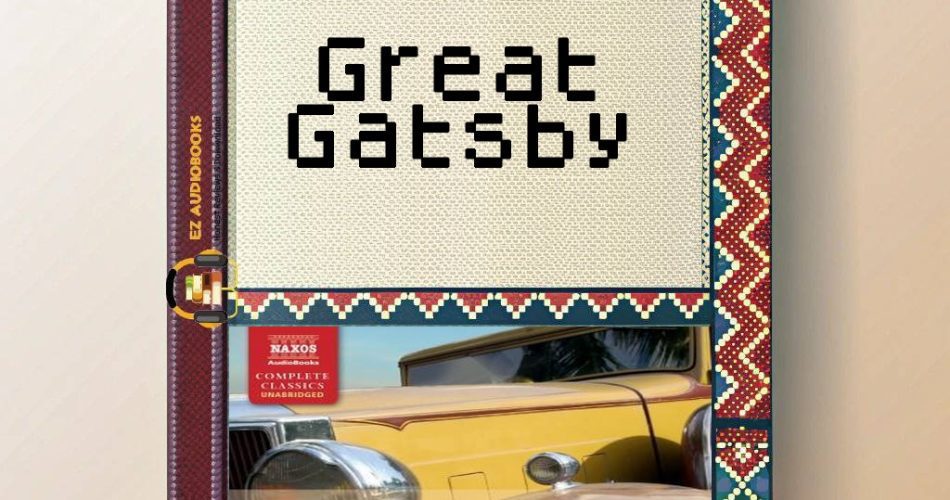Audiobook Sample
Listen to the sample to experience the story.
Please wait while we verify your browser...
- Title: Great Gatsby
- Author: F. Scott Fitzgerald
- Narrator: Mike Shah, William Hope
- Length: 05:40:00
- Version: Abridged
- Release Date: 24/08/2010
- Publisher: Naxos Audiobooks
- Genre: Fiction & Literature, Classics, Fiction & Literature, Classics
- ISBN13: 9.79E+12
As I sit in my book-lined study at Columbia, the amber light catching dust motes like champagne bubbles at one of Gatsby’s parties, I’m reminded why Fitzgerald’s masterpiece continues to captivate nearly a century later. This Naxos Audiobooks production, narrated by Mike Shah and William Hope, offers a fresh acoustic portal into West Egg’s glittering deception that particularly resonates with my cross-cultural research on narrative perception.
“The Listener’s Invitation”
The dual narration creates fascinating textual harmonics – Shah’s Nick Carraway carries the wistful authenticity of my graduate students’ first encounters with American literature, while Hope’s Gatsby vibrates with the same desperate energy I observed in Tokyo’s bubble-era businessmen during my visiting professorship. Their vocal interplay mirrors Fitzgerald’s central dichotomy: the Midwest’s pragmatic morality versus East Coast aristocratic performance.
“Cultural Echoes Across Mediums”
Hearing Gatsby’s famous introduction (‘In his blue gardens…’) while walking through New York’s current Gold Coast, I was struck by how audio transforms spatial descriptions into immersive soundscapes. The narrators’ careful pacing during the valley of ashes passages made me physically feel the industrial grime, much like how Murakami’s Tokyo soundscapes affected me differently in Japanese versus English.
“Thematic Resonance in Audio Form”
1. “American Dream as Soundwave”: Hope’s Gatsby voice gradually cracks during the hotel confrontation scene, sonically charting the dream’s disintegration. The audio format intensifies Fitzgerald’s critique – we literally hear the fantasy crumbling.
2. “Class as Vocal Texture”: Shah’s deliberate flattening of tone when voicing old money characters (especially Jordan Baker) brilliantly conveys aristocratic ennui. His Tom Buchanan growl contains all the toxic masculinity my gender studies seminar analyzed last spring.
3. “Temporal Layering”: The narrators’ subtle shifts between Nick’s retrospective narration and present-tense action create an aural equivalent to Fitzgerald’s complex chronology – an effect I’ve only previously achieved in class through laborious close-reading exercises.
“Comparative Perspectives”
This production’s jazz-age ambiance differs markedly from the 2013 film’s anachronistic soundtrack, yet achieves similar thematic heightening. When compared to the recent multilingual ‘Gatsby’ project from my Berkeley colleagues, this English version reveals how Fitzgerald’s prose rhythm – particularly in party scenes – contains its own musicality that translation often mutes.
“Pedagogical Potential”
For educators, this audiobook solves the challenge of conveying Fitzgerald’s symbolic colors to digital-native students. Hearing Shah emphasize every ‘yellow’ and ‘green’ makes the chromatic motifs register more viscerally than silent reading. I’ll certainly use Chapter 3’s party sequence to demonstrate auditory world-building in my fall course on multisensory narratives.
“Minor Reservations”
The narration occasionally underplays the Valley of Ashes’ metaphysical significance, and Myrtle’s vocal characterization borders on caricature. Yet these are quibbles against an otherwise masterful performance that makes Gatsby’s tragic arc feel newly inevitable with each listening.
“Final Recommendation”
Whether you’re a first-time explorer of West Egg or a seasoned Fitzgerald scholar like myself, this audiobook offers revelatory dimensions. The narrators’ nuanced handling of the famous closing lines (‘boats against the current…’) gave me chills rivaling my first encounter with the text at Yale’s Sterling Library. A must-experience rendition that proves great literature grows richer when heard as well as read.
In scholarly solidarity and shared wonder,
Prof. Emily Chen

